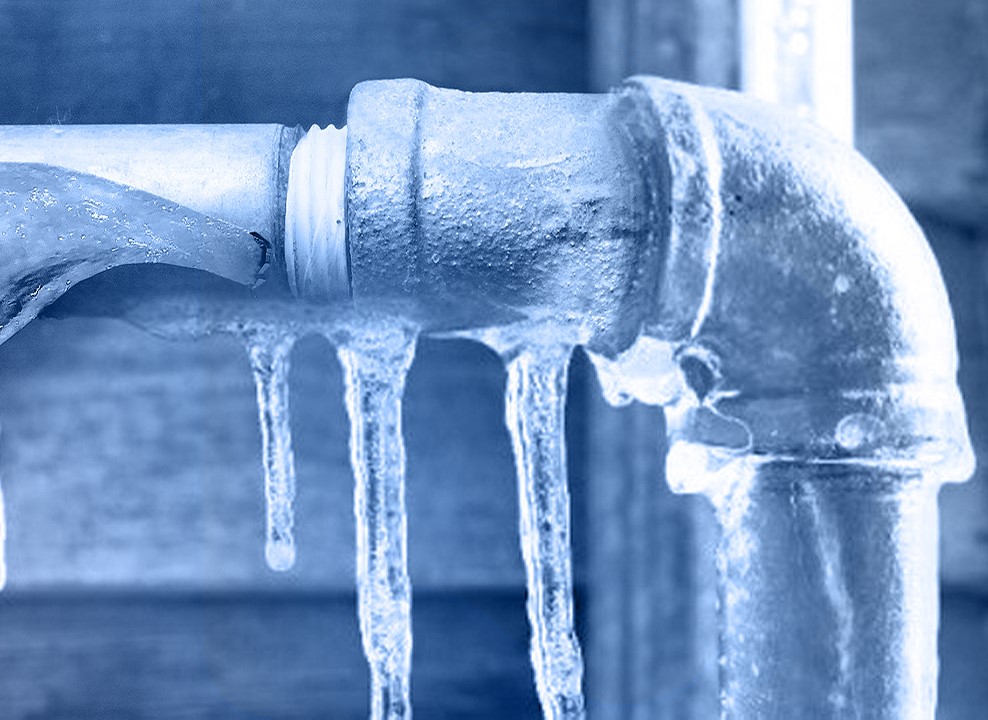Protect Against Frozen Pipes in Cold Weather: Pro Advice
Protect Against Frozen Pipes in Cold Weather: Pro Advice
Blog Article
This article down the page in relation to Prevent Frozen Pipes is rather motivating. Don't miss out on it.

Winter can ruin your plumbing, specifically by freezing pipes. Here's exactly how to prevent it from occurring and what to do if it does.
Introduction
As temperature levels drop, the danger of icy pipes rises, possibly causing pricey repair work and water damage. Recognizing just how to stop icy pipelines is critical for homeowners in cold climates.
Prevention Tips
Protecting at risk pipelines
Wrap pipes in insulation sleeves or utilize warmth tape to protect them from freezing temperatures. Focus on pipes in unheated or outside locations of the home.
Home heating strategies
Maintain indoor rooms properly heated, especially areas with plumbing. Open cabinet doors to allow warm air to circulate around pipes under sinks.
Exactly how to identify frozen pipelines
Seek lowered water circulation from faucets, unusual smells or sounds from pipes, and visible frost on exposed pipes.
Long-Term Solutions
Architectural changes
Think about rerouting pipes far from outside walls or unheated locations. Add extra insulation to attic rooms, basements, and crawl spaces.
Updating insulation
Purchase top quality insulation for pipelines, attics, and walls. Appropriate insulation helps preserve consistent temperature levels and reduces the threat of frozen pipelines.
Protecting Outside Plumbing
Yard hoses and outside taps
Disconnect and drain pipes yard hose pipes prior to winter. Set up frost-proof faucets or cover exterior faucets with shielded caps.
Understanding Frozen Pipelines
What creates pipelines to freeze?
Pipes freeze when subjected to temperature levels listed below 32 ° F (0 ° C) for extended periods. As water inside the pipelines ices up, it broadens, taxing the pipeline walls and possibly causing them to break.
Risks and problems
Icy pipelines can bring about water supply interruptions, residential property damage, and costly repair work. Burst pipes can flooding homes and create substantial structural damage.
Signs of Frozen Pipeline
Identifying icy pipelines early can avoid them from bursting.
What to Do If Your Pipelines Freeze
Immediate activities to take
If you think frozen pipelines, keep taps available to alleviate pressure as the ice thaws. Use a hairdryer or towels taken in hot water to thaw pipelines slowly.
Conclusion
Stopping frozen pipelines requires positive measures and fast reactions. By recognizing the reasons, indicators, and preventive measures, house owners can protect their plumbing throughout cold weather.
6 Proven Ways to Prevent Frozen Pipes and Protect Your Home
Disconnect and Drain Garden Hoses
Before winter arrives, start by disconnecting your garden hoses and draining any remaining water. Close the shut-off valves that supply outdoor hose bibs and leave the outdoor faucet open to allow any residual water to drain. For extra protection, consider using faucet covers throughout the colder months. It’s also important to drain water from any sprinkler supply lines following the manufacturer’s directions.
Insulate Exposed Pipes
Insulating your pipes is an effective way to prevent freezing. Pipe insulation is readily available at home improvement stores and is relatively inexpensive. Pay close attention to pipes in unheated areas such as the attic, basement, crawl spaces, or garage. Apply foam insulation generously to create a buffer against the cold. You can also wrap your pipes in heat tape or thermostat-controlled heat cables for added warmth.
Seal Air Leaks
Inspect your home for any cracks or openings that could let in cold air. Seal any holes around the piping in interior or exterior walls, as well as the sill plates where your home rests on its foundation. Additionally, make sure to keep your garage door closed unless you’re entering or exiting. Leaving it open creates a significant air leak that can lead to frozen pipes.
Allow Warm Air Circulation
During cold snaps, it’s essential to allow warm air to circulate evenly throughout your home. Leave interior doors ajar to promote better airflow. Open kitchen and bathroom cabinets to help distribute heat consistently around the rooms. If you have small children or pets, be sure to remove any household chemicals or potentially harmful cleaners from open cabinets for safety.
Let Faucets Drip
A small trickle of water can make a big difference in preventing ice formation inside your pipes. When temperatures drop significantly, start a drip of water from all faucets served by exposed pipes. This continuous flow helps prevent the water from freezing. Additionally, running a few faucets slightly can relieve pressure inside the pipes, reducing the chances of a rupture if the water inside does freeze.
https://choateshvac.com/6-proven-ways-to-prevent-frozen-pipes-and-protect-your-home/

I was introduced to that article on How to Prevent Your Pipes From Freezing from an acquaintance on another blog. Do you know about somebody else who is enthusiastic about the niche? Please feel free to share it. We appreciate reading our article about Prevent Frozen Pipes .
Schedule Today Report this page